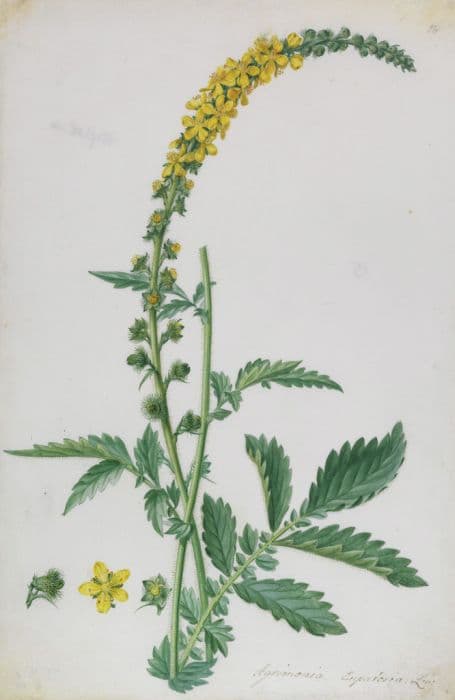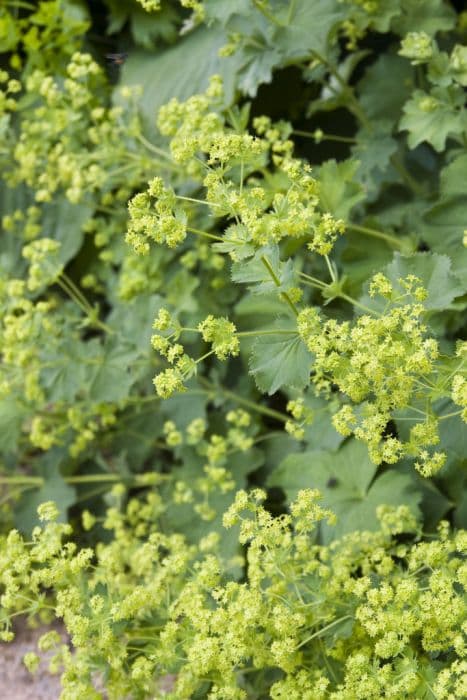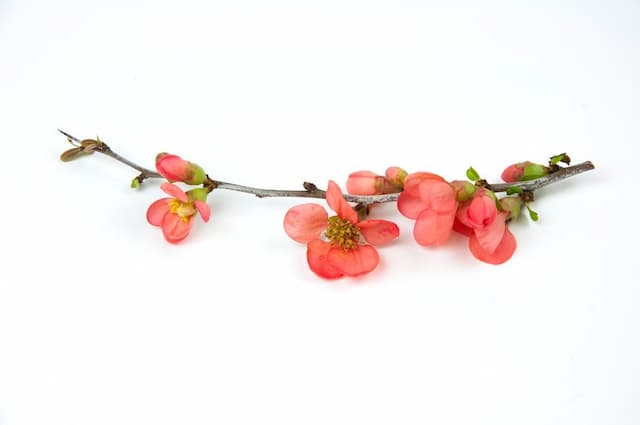Quince Cydonia oblonga (F)

ABOUT
Cydonia oblonga, commonly known as the quince, is a deciduous tree with a twisted gnarly shape, adding a unique character to garden landscapes. During spring, the quince displays a spectacular floral show, with large, solitary, white or pale pink blossoms featuring five petals. These blooms not only add beauty but they also exude a delightful fragrance, attracting pollinators. As the seasons progress, the leaves emerge with a glossy, dark green upper surface and a fuzzy, lighter underside. The leaves are broadly oval with pointed tips and finely serrated edges. In high summer, the foliage provides a lush, dense canopy, creating dappled shade beneath. Once pollinated, the flowers develop into the fruit for which the plant is most well-known. The quince fruit has a distinct pear-like shape, with a golden-yellow exterior when ripe. The skin is often covered with a fuzz that can be easily rubbed off. The flesh of the fruit is hard and has a tart, astringent taste until it is fully ripened or cooked, transforming into a sweet and fragrant delicacy, enjoyed in various culinary dishes and preserves. The bark of the quince tree is typically dark brown and, with age, becomes rough and fissured, adding textural interest. Its branches can grow in a contorted fashion, which gives the tree an almost sculptural appearance, especially when viewed against the starkness of winter's backdrop when the tree is leafless. Overall, the quince is prized for its enchanting blossoms, unique fruit, and twisted architectural form, making it a distinctive addition to gardens where it is grown for both its ornamental and edible qualities.
About this plant
 Names
NamesFamily
Rosaceae.
Synonyms
Quince, Common Quince, European Quince.
Common names
Cydonia vulgaris, Pyrus cydonia, Cydonia maliformis, Cydonia oblonga var. pyriformis.
 Toxicity
ToxicityTo humans
The plant commonly known as quince (Cydonia oblonga) is not regarded as toxic to humans. This fruit-bearing tree produces quinces, which are edible when cooked. However, the raw fruit is hard and astringent, and generally not considered pleasant to eat. The seeds, like those of many fruits, contain amygdalin, which can release cyanide when metabolized. Consumption of large quantities of seeds could, in theory, result in cyanide poisoning, with symptoms including headache, confusion, nausea, vomiting, and possible respiratory failure in severe cases. However, typical consumption of the fruit flesh without seeds is safe and does not pose a toxicity risk to humans.
To pets
The quince (Cydonia oblonga) is not commonly listed as a toxic plant to pets. The fruit itself can be eaten by pets if cooked, but it is not a standard part of an animal's diet. As with humans, the seeds do contain amygdalin, which can metabolize into cyanide. Ingestion of a large number of seeds could potentially lead to cyanide poisoning, with possible symptoms in pets including vomiting, difficulty breathing, and in severe cases, potentially leading to respiratory failure. It's important to prevent pets from consuming large amounts of the seeds to avoid the risk of poisoning, but the flesh of the fruit is not considered toxic to pets when prepared appropriately.
 Characteristics
CharacteristicsLife cycle
Perennials
Foliage type
Deciduous
Color of leaves
Green
Flower color
Pink
Height
10-15 feet (3-4.5 meters)
Spread
10-15 feet (3-4.5 meters)
Plant type
Tree
Hardiness zones
5-9
Native area
Southwest Asia
Benefits
 General Benefits
General Benefits- Nutrition - Cydonia oblonga, commonly known as quince, is a good source of dietary fiber, vitamins, and minerals.
- Culinary Uses - Quince fruit is used in jams, jellies, and preserves due to its high pectin content, and it can also be cooked and used in desserts.
- Ornamental Value - With its attractive pale pink blossoms and golden yellow fruit, quince trees are often grown for their decorative appeal.
- Wildlife Habitat - Quince trees can provide food and shelter for various birds and insects within their natural habitat or cultivated landscapes.
- Soil Improvement - The tree’s root system can help stabilize soil and prevent erosion in certain environments.
- Cultural Significance - Quince holds traditional and cultural importance in many regions, being associated with marriage, fertility, and love.
 Medical Properties
Medical Properties- Antioxidant: Quince fruit, from Cydonia oblonga, is known to contain high levels of vitamin C and other antioxidants, which can help neutralize free radicals and reduce oxidative stress.
- Anti-inflammatory: The phenolic compounds in quince have been found to have anti-inflammatory properties, potentially beneficial in reducing inflammation-related conditions.
- Gastroprotective: The mucilage and fiber content of quince may protect the gastrointestinal tract, soothing mucous membranes and possibly aiding in the management of gastritis and ulcers.
- Antidiarrheal: Due to its high pectin content, quince is traditionally used to alleviate diarrhea by increasing stool consistency.
- Antiallergenic: Quince has been reported to have antiallergenic effects, possibly assisting in the relief of allergic reactions due to its ability to inhibit immune response.
- Antiviral: Extracts from Cydonia oblonga have shown potential antiviral activities in scientific studies, though more rigorous research is needed for conclusive evidence.
- Antimicrobial: Some studies suggest that quince may possess antimicrobial properties against a variety of pathogens, offering a potential natural alternative for infection control.
 Air-purifying Qualities
Air-purifying QualitiesThis plant is not specifically known for air purifying qualities.
 Other Uses
Other Uses- The wood of the quince tree is used in the art of woodturning to create decorative items, as it has a fine grain and polishes well.
- In some cultures, quince fruits are used to create natural dyes for fabrics, giving a range of colors from soft yellows to deep oranges.
- Quince seeds, when soaked in water, produce a mucilaginous gel used as a hair styling product, providing moderate hold and texture.
- Quince fruit can be processed into a paste, known as membrillo, which is traditionally served with cheese in Spanish cuisine.
- The fragrant flowers of the quince can be placed in cupboards and drawers as natural air fresheners to impart a pleasant scent to linens and clothing.
- Quince is sometimes grown ornamentally for its attractive pale pink blossoms, which brighten up gardens in the spring.
- Fruit leather made from quince provides a natural and healthy snack alternative, enjoyed for its unique tart flavor.
- The pectin-rich nature of quince fruits makes them excellent for use in jams, jellies, and marmalades, acting as a natural thickener.
- In some parts of the world, quince leaves are used to prepare a herbal tea, though not for medicinal purposes, simply enjoyed for its flavor and aroma.
- Quince can be used in perfumery as a source of essential oils that capture the fruit's delicate floral scent, often in combination with other fragrances.
Interesting Facts
 Feng Shui
Feng ShuiThe Quince is not used in Feng Shui practice.
 Zodiac Sign Compitability
Zodiac Sign CompitabilityThe Quince is not used in astrology practice.
 Plant Symbolism
Plant Symbolism- Love and fertility: Cydonia oblonga, commonly known as quince, has been associated with love and fertility throughout history. In ancient Greece, quince was sacred to Aphrodite, the goddess of love and beauty, and it was commonly given as a gift at weddings.
- Happiness and good fortune: In some cultures, the quince is seen as a symbol of happiness and good fortune. It is sometimes used in rituals or ceremonies to bless people with these positive qualities.
- Protection: Quince is also believed to offer protection against evil influences, negative energies, and misfortune. This symbolism is derived from its long-lasting and hardy nature.
- Longevity and immortality: Due to its hard and tough wood, as well as the long shelf life of its fruit, the quince has come to symbolize longevity and, by extension, immortality in some cultural contexts.
- Commitment and prosperity: When given as a gift, the quince can represent a wish for commitment and prosperity, making it a fitting gift for new ventures or enduring relationships.
 Water
WaterThe quince tree should be watered deeply once a week, providing about 1-2 gallons of water per session to help establish strong roots. In hot, dry weather, increase watering frequency to twice per week. Mature quince trees require less frequent watering but should still receive deep watering every two to three weeks if there's no significant rainfall. Adjust the amount and frequency of watering depending on soil drainage and rainfall; well-draining soil may require less, while clay soils might need additional water. Always check the soil moisture before watering to prevent overwatering.
 Light
LightQuince trees thrive in full sunlight, requiring at least six hours of direct sunlight each day for optimal growth and fruit production. Plant them in a location where they can receive unfiltered sunlight throughout the day. Partial shade is tolerated but may result in reduced fruit yield and quality.
 Temperature
TemperatureQuince trees can tolerate a broad range of temperatures but grow best when the average temperature is between 50°F and 85°F. They can survive temperatures as low as -10°F once well-established and can handle the summer heat up to 100°F. The ideal growing condition for quince trees is a temperate climate with warm, sunny days and cool nights.
 Pruning
PruningPrune quince trees to remove dead or diseased wood, to shape the tree, and to encourage better air circulation within the canopy. The best time to prune is during the dormant season, late winter or early spring before new growth begins. Thin out crowded branches and trim back overly vigorous growth once a year to maintain the health and productivity of the tree.
 Cleaning
CleaningAs needed
 Soil
SoilQuince prefers well-draining, loamy soil with a pH between 6.0 and 7.0. For the best soil mix, incorporate equal parts garden soil, compost, and perlite to ensure good drainage and fertility.
 Repotting
RepottingQuince trees, being relatively slow growers, don't require frequent repotting. It is typically sufficient to repot young trees every two to three years and mature trees only when they outgrow their containers.
 Humidity & Misting
Humidity & MistingQuince trees are quite adaptable but prefer moderate humidity levels. While they can tolerate a range of conditions, they thrive best in an environment with 50-60% relative humidity.
 Suitable locations
Suitable locationsIndoor
Grow quince in a sunny spot, in a large pot with good drainage.
Outdoor
Plant in full sun, well-draining soil; water and prune regularly.
Hardiness zone
5-9 USDA
 Life cycle
Life cycleThe common quince (Cydonia oblonga) begins its life cycle when a seed germinates in the soil, typically requiring cold stratification to break dormancy. The seedling sprouts and develops into a young plant with a deep root system and leafy shoots. As it matures, it grows into a small to medium-sized deciduous tree, which can take several years to flower. Once mature, the quince produces single white or pale pink flowers in spring, which, upon successful pollination (often by bees), develop into fragrant, pear-shaped fruit by late autumn. The fruit ripens and can be harvested for culinary uses or left to fall for seed dispersal. The quince tree can live and bear fruit for many decades if given proper care and conditions.
 Propogation
PropogationPropogation time
Spring to Summer
Quince (Cydonia oblonga) is typically propagated by grafting, which is the most popular method due to its reliability and the preservation of cultivar characteristics. The ideal time to graft quince is in late winter or early spring before the buds begin to swell. The process involves taking a scion, which is a cutting from a desirable quince variety, and joining it to a compatible rootstock. The scion should have a few buds and be about 6 to 8 inches (15 to 20 cm) long. The rootstock, which provides the root system for the grafted plant, is often chosen for its disease resistance and adaptability to local soil conditions. The two parts are joined together using a grafting technique such as whip grafting or budding, and the union is sealed with grafting tape or wax to prevent drying out. After successful grafting, the new plant will combine the qualities of the selected quince variety with the hardiness of the rootstock.









